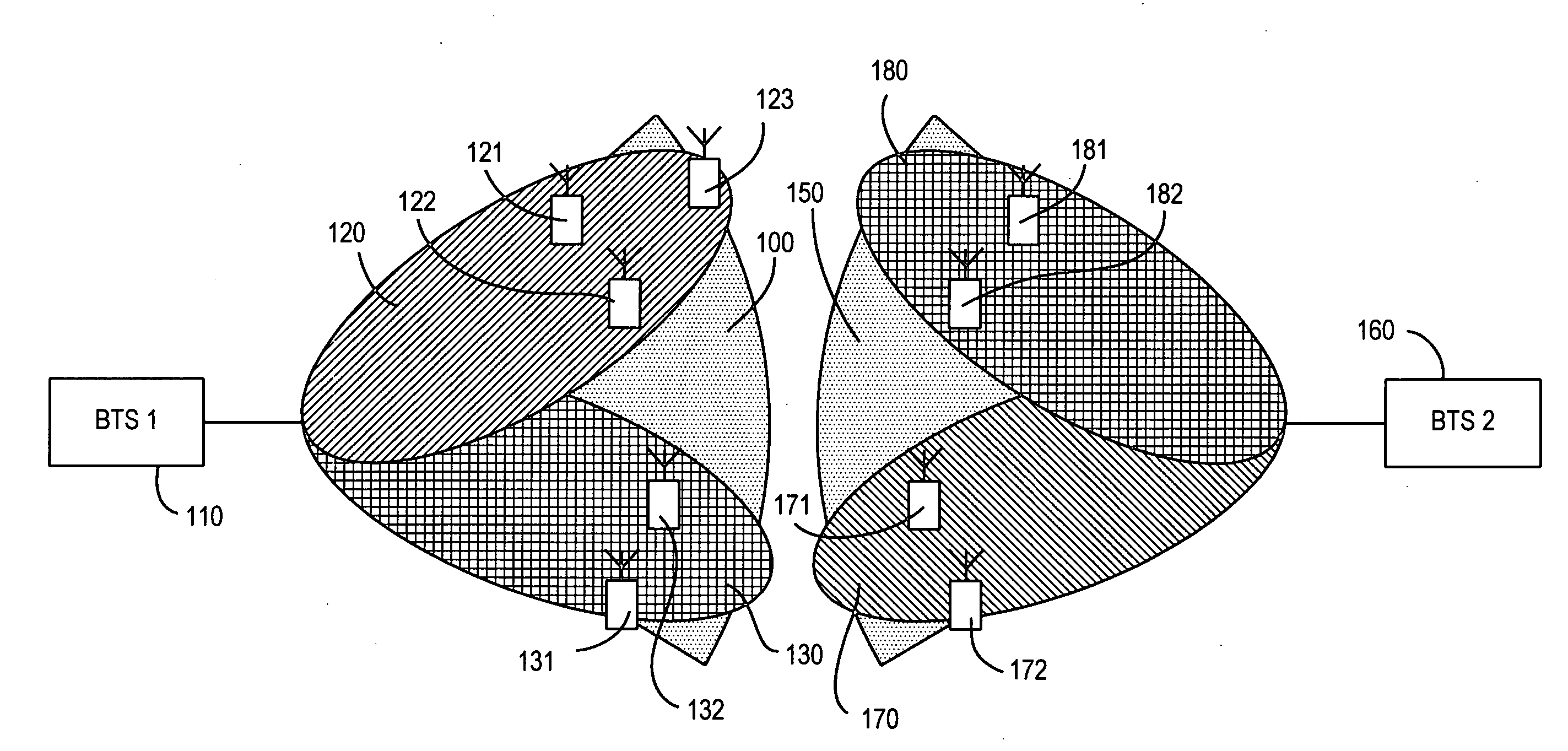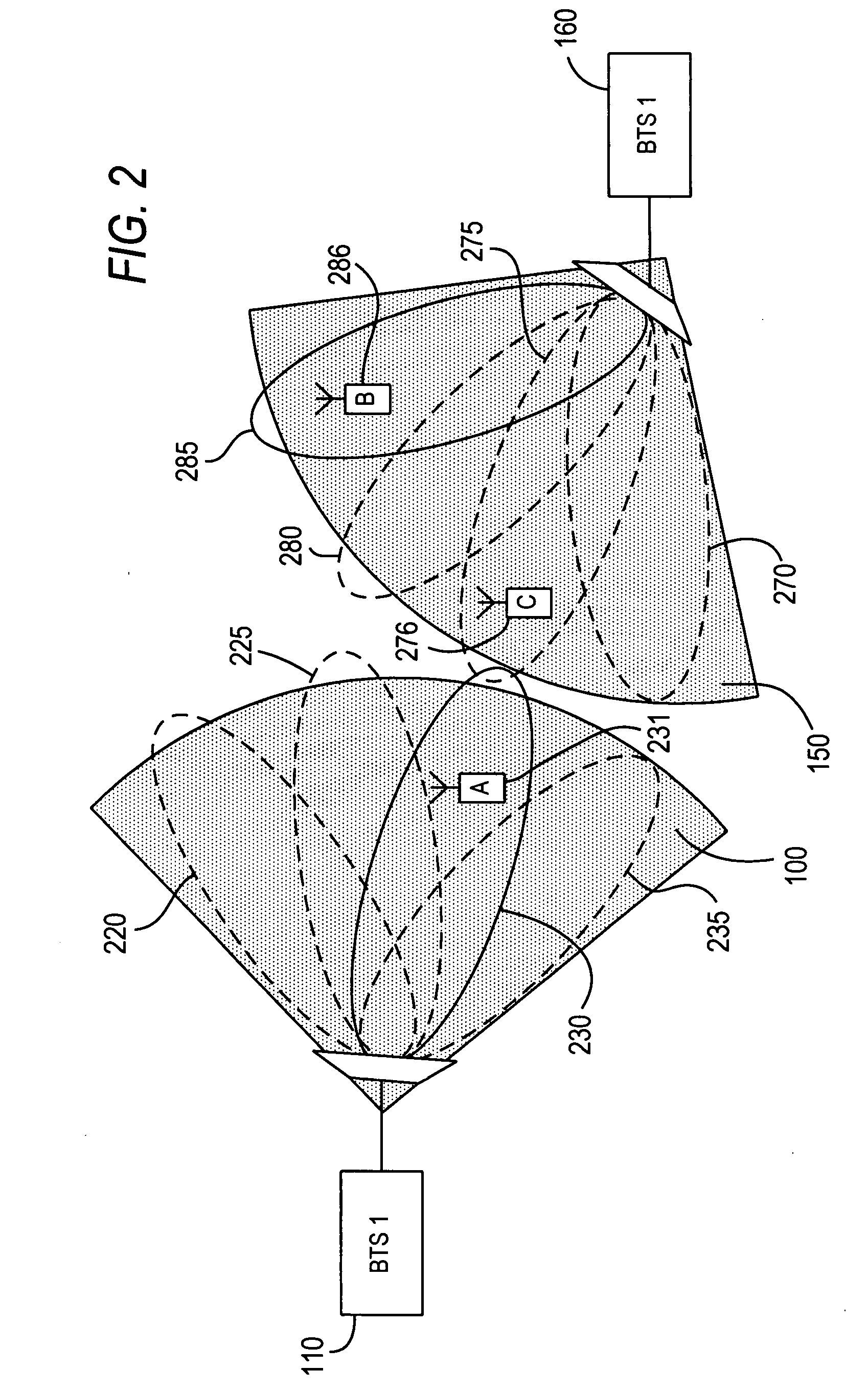Method and apparatus for multi-user scheduling for interference avoidance in adaptive beamforming systems
a beamforming system and multi-user technology, applied in frequency-division multiplexes, instruments, site diversity, etc., can solve the problem of limiting the coverage area over which high data rates are allowed, and achieve the effect of avoiding interference, high data rates, and improving coverage/capacity performance within the network
- Summary
- Abstract
- Description
- Claims
- Application Information
AI Technical Summary
Benefits of technology
Problems solved by technology
Method used
Image
Examples
Embodiment Construction
[0036]The invention will be described for the purposes of illustration only in connection with certain embodiments; however, it is to be understood that other objects and advantages of the present invention will be made apparent by the following description of the drawings according to the present invention. While a preferred embodiment is disclosed, this is not intended to be limiting. Rather, the general principles set forth herein are considered to be merely illustrative of the scope of the present invention and it is to be further understood that numerous changes may be made without straying from the scope of the present invention.
[0037]Referring to FIG. 1, there is shown a block diagram illustrating two adjacent cells 100, 150, each serviced by a base station 110, 160 implementing adaptive beamforming. In the example shown, each cell generates two fixed beams 120, 130, and 170, 180 respectively, each covering approximately half of the cell area.
[0038]Those having ordinary skill...
PUM
 Login to View More
Login to View More Abstract
Description
Claims
Application Information
 Login to View More
Login to View More - R&D
- Intellectual Property
- Life Sciences
- Materials
- Tech Scout
- Unparalleled Data Quality
- Higher Quality Content
- 60% Fewer Hallucinations
Browse by: Latest US Patents, China's latest patents, Technical Efficacy Thesaurus, Application Domain, Technology Topic, Popular Technical Reports.
© 2025 PatSnap. All rights reserved.Legal|Privacy policy|Modern Slavery Act Transparency Statement|Sitemap|About US| Contact US: help@patsnap.com



